Fresh strawberries are delicious. Fresh strawberries are packed with nutrition. And far too often, fresh strawberries go moldy in the refrigerator overnight. But there are simple remedies from your garden, your refrigerator, and your spice rack — that also work for commercial strawberry producers — that keep strawberries plump, juicy, and completely edible for longer than you can imagine.
Jump to:
- What’s the Problem With Moldy Berries?
- Cinnamon Sticks Fight Fruit Decay
- Cloves Also Help Keep Strawberries Fresh
- A Honey of a Treatment for Sliced Strawberries
- Lemon Zest for Fighting Mold in Strawberries
- Onions and Garlic Fight Strawberry Fruit Decay
- Broccoli Is a Friend to Strawberries
- You Can Apply the Principles of Plant Power With Companion Planting
- All of These Home Remedies Have Commercial Applications
- None of These Mold-Fighting Remedies Works Well Without Refrigeration After Harvest
What’s the Problem With Moldy Berries?
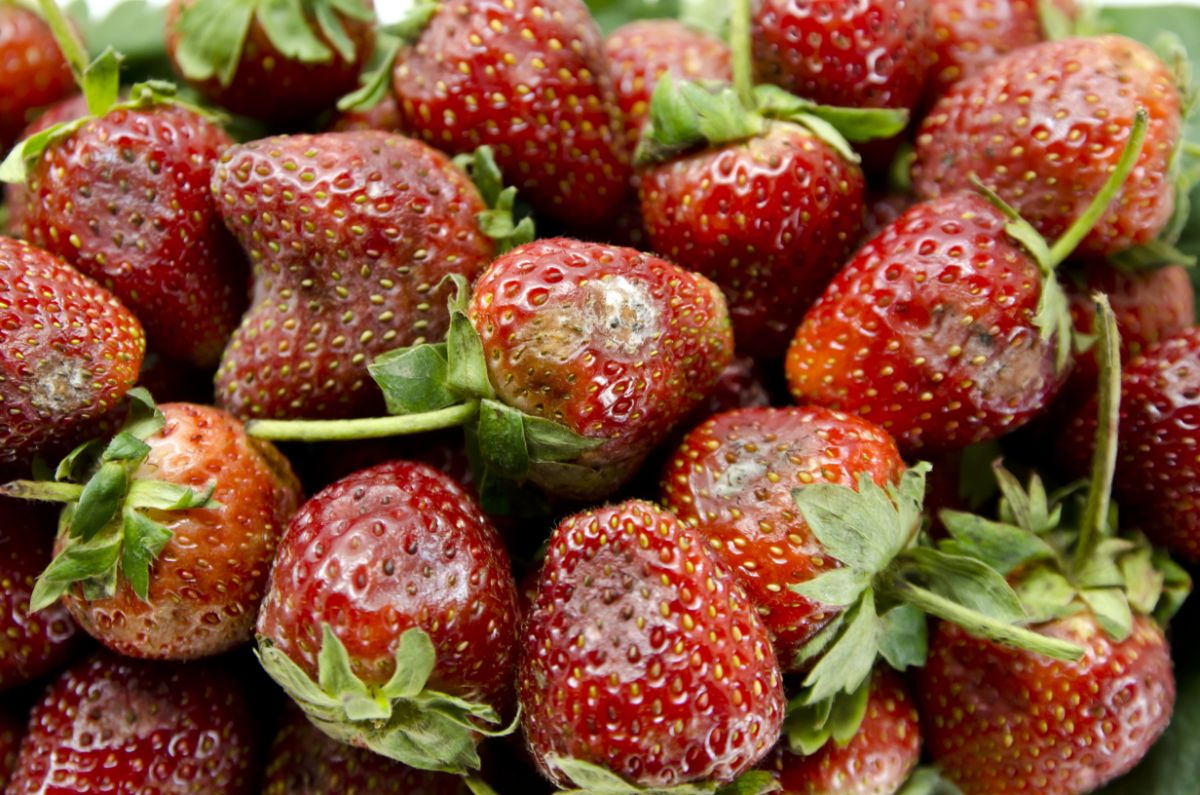
Nobody enjoys eating moldy strawberries. Chances are that you have never eaten one, even accidentally, but if you had, you would have tasted some kind of combination of the taste of overripe cheese and the scent of unwashed tennis shoes. Moldy strawberries are disgusting. And because molds can cause allergies and respiratory reactions, moldy strawberries aren’t safe to eat.
Finding a few moldy strawberries doesn’t mean you have to throw out the entire container. Scientists at the University of California told us that it’s OK to remove moldy strawberries and eat the rest, checking each berry carefully for fungal contamination before serving it or popping it in your mouth.
Mold on strawberries isn’t like mold on hard cheese. You can’t cut off the moldy part of a strawberry and eat the rest, the same way you can salvage hard cheese.
There’s no way to wash mold off strawberries. And if you don’t remove the first few strawberries in a clamshell that get moldy, you are just a few hours away from losing every strawberry in the container. Fortunately, there are simple kitchen remedies that can shut down the growth of mold before it ever happens.
Cinnamon Sticks Fight Fruit Decay
Do you pop in whole sticks of cinnamon when you are cooking rice or oatmeal? Do you use cinnamon sticks in spiced cider and winter beverages? Or do you steep cinnamon sticks in hot water to make cinnamon tea?
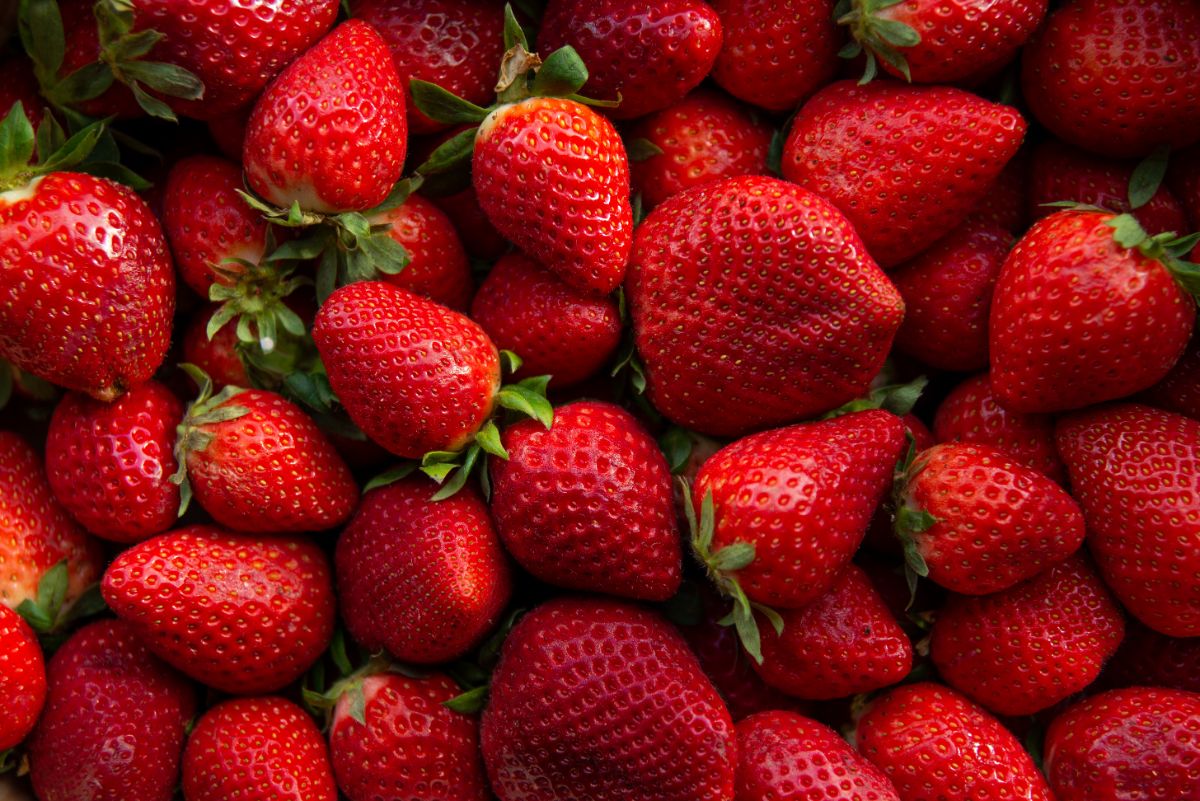
Don’t throw used cinnamon sticks away. Rinse them, dry them off, and then add them to the next clamshell of strawberries you take home from the supermarket or the strawberry stand.
Cinnamon fights fruit decay with the power of cinnamaldehyde. This is the chemical responsible for cinnamon’s aroma and flavor. The fungus-fighting abilities of cinnamaldehyde are sufficiently well known that cinnamon extracts are used to treat fungal infestations of crops on organic farms and gardens. Essential oil of cinnamon is pungent, spicy, and sweet. It leaves a burning sensation on the tongue, but you won’t have to deal with the burning sensation if you just plop a couple of cinnamon sticks in the container with your strawberries when you put them in the refrigerator after you bring them home.
How does cinnamon keep strawberries fresh?
Scientists at the Lithuanian Research Centre for Agriculture and Forestry confirm that cinnamon extracts kill the pathogen Botrytis cinerea, the gray mold you can bring in with your strawberries in cool, damp weather. You don’t have to sprinkle ground cinnamon on your strawberries to reduce the risk of this kind of mold (and if you did, their flavor would be affected). Cinnamon sticks reduce the risk of mold without changing the flavor of your strawberries.
But it’s perfectly OK to add ground cinnamon to strawberries you intend to use to make cinnamon-glazed strawberries, strawberries with cinnamon cream, strawberry cinnamon rolls, or fresh strawberries with brown sugar and cinnamon.
Cloves Also Help Keep Strawberries Fresh
If you love Moroccan flavors, you can combine cloves and strawberries to bring out the aroma of the strawberries while keeping them fresher in the fridge.
A chemical found in cloves called eugenol helps to keep strawberries fresh in cold storage. This chemical can stop gray mold in its tracks. The ideal way to use cloves to preserve strawberry color and flavor is to sprinkle ground cloves over strawberries in their clamshell, although whole cloves are also helpful. It’s better to avoid oil of cloves because the flavor is too strong.
Eugenol also occurs in cinnamon leaves (which are used in curry but aren’t the cinnamon with which most North Americans and Europeans are familiar), nutmeg, bay leaves, and basil. If you have basil in your produce crisper, put your strawberries next to it, but don’t place both in the same container unless you intend to serve them together.
You can also get some protection against decay by placing a couple of bay leaves in the box with your strawberries and using the bay leaves for some other purpose after they have done their duty with the strawberries.
A Honey of a Treatment for Sliced Strawberries
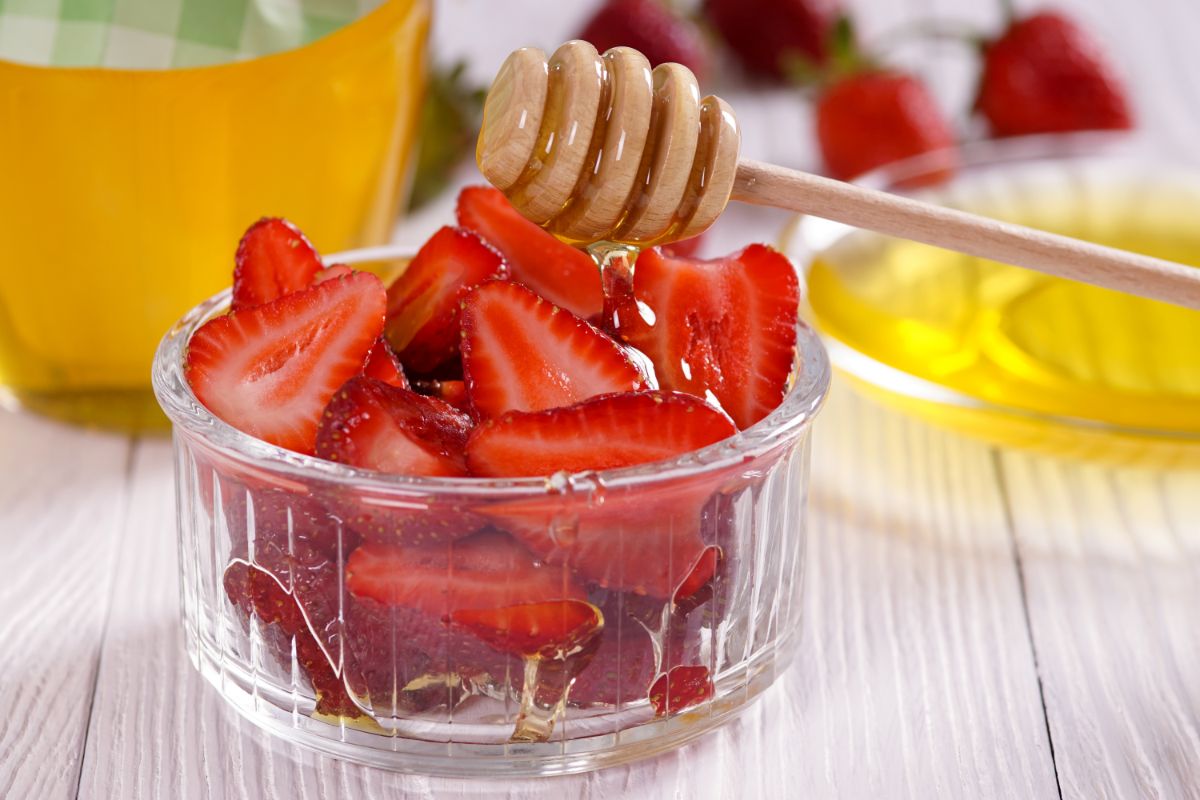
Honey doesn’t just sweeten strawberries. It fights the molds that rob strawberries of their flavor while you keep them in your refrigerator.
There are few better natural fungus fighters than honey. Although honey is processed by bees, it is made from the nectars they gather from the flowers of plants that produce potent chemicals to protect their seeds from decay. If you plan to sweeten your strawberries — and sometimes strawberries need a little help to balance sweet and sour flavors — using honey as your sweetener instead of stevia, artificial sweeteners, or sugar will both fight decay and preserve natural strawberry aromas.
How does honey help keep strawberries fresh? Honey contains not just one but five chemical compounds that fight fungi, molds, and bacteria, benzaldehyde, hexan-1-ol, hex-2-enal hex-3-en-1-ol, and 2-nonanone. These chemicals give honey slight hints of cheesy and grassy flavors that complement the complex flavors of strawberries. They prevent mold and decay on honey stored in honeycombs in the hive. Honey physically “suffocates” microorganisms that grow on the surface of strawberries and these chemicals interfere with microbial growth.
Planning to dip your strawberries in chocolate? Wash and dip them in honey first for additional sweetness and complex flavor as well as longer shelf life.
Lemon Zest for Fighting Mold in Strawberries
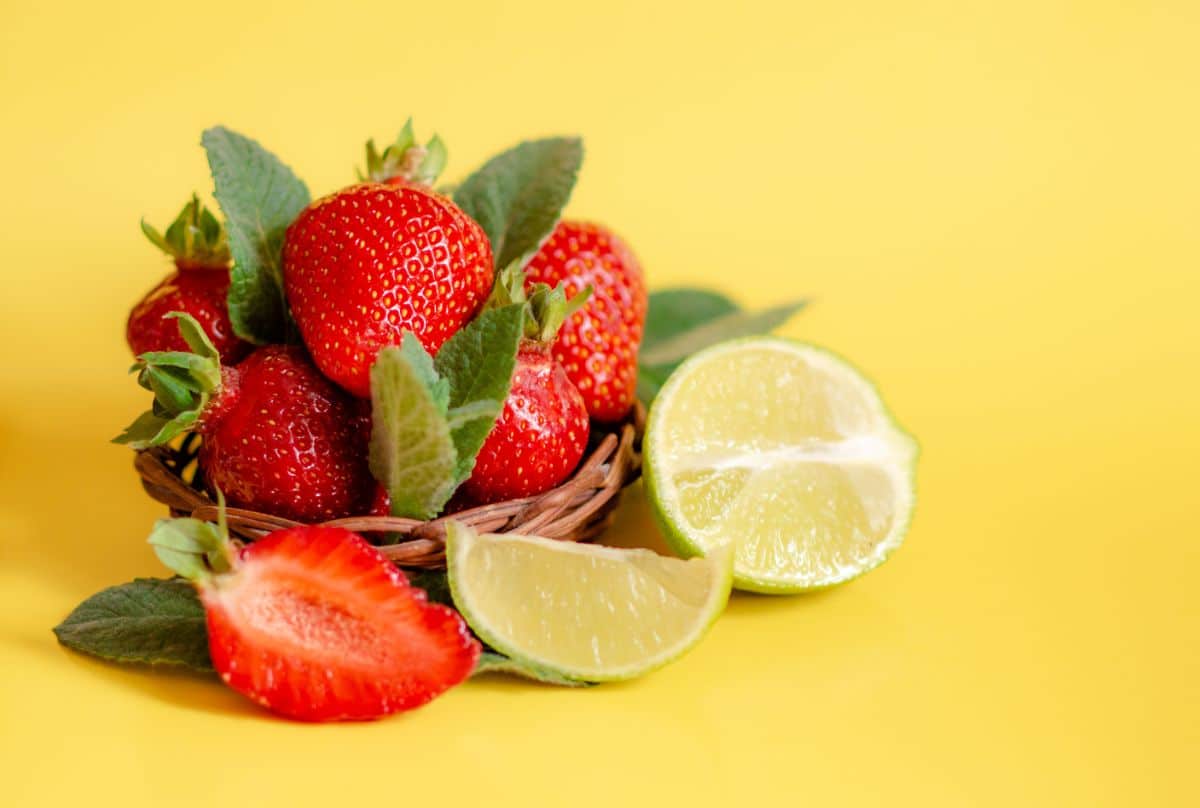
Lemon zest adds a citrusy aroma to your strawberries while helping to keep them fresh in the fridge.
A simple way to stop mold on strawberries is to sprinkle them with fresh lemon zest. The zest of a lemon is the “yellow” of its peel, not the white pith beneath it. Lemon zest is best removed from a lemon with a lemon zester, although any grater will do. Usually, one lemon provides enough zest for a one-pound (454 gram) clamshell of strawberries, keeping them from molding in the refrigerator. Of course, you can still use the lemon for juice for some other kitchen application.
What’s special about lemon zest for strawberries? For one thing, many people find that the lemon zest, which is rinsed off the berries before serving, provides a subtle enhancement to their flavor. And multiple scientific studies have confirmed that a variety of chemicals in lemon zest have natural fungicidal properties while being completely non-toxic to people. Here are a few of those chemicals:
Limonene. A group of scientists at the Department of Food Science at the University of Valencia in Spain have confirmed that the equivalent of half a teaspoon (2 ml) of lemon oil added to a clamshell of strawberries stops the growth of a kind of fungus known as Botrytis. That’s about the amount of lemon oil in the zest of one large lemon.
Botrytis, which we covered in our article on strawberry plant diseases, is a kind of fruit rot that is activated when strawberries are stored in a refrigerator that is not cool enough. This fungus thrives at about 52 degrees Fahrenheit (10 degrees Celsius) but it is stopped by temperatures of 33 to 37 degrees Fahrenheit (0.5 to 3 degrees Celsius), just above freezing — or by treatment with lemon zest.
Some commercial producers of strawberries spray their product with a mixture of an animal-derived fiber product called chitosan and lemon oil. The chitosan helps the oils in the lemon zest stick to the berry and it keeps the fruit from acquiring a lemony aroma.
There is no need for the chitosan at home (although you can make use of chitosan in your home garden strawberry patch while your plants are still producing, as you can read below). You can get the same results with lemon zest. You will have an added lemon flavor to your strawberries, but most people find it adds to the flavor of the strawberries rather than taking away from it.
Dr. Duke’s Phytochemical Database reports that between half and 98 percent of the volume of lemon oil is limonene. This makes it an excellent antifungal for preserving strawberries in the fridge. This antifungal chemical also appears in lower concentrations in celery seed, black pepper, and fennel seed oil. These common spices would have a similar antifungal effect on strawberries but alter taste. However, if you are planning to use strawberries in a savory dish, these spices add to flavor profiles while preserving the strawberries.
Linalool. Lemon zest and lemon oil also help to keep strawberries fresh through the power of a chemical called linalool. A team of researchers at China’s Zhejiang University have confirmed that this chemical shuts down respiration in molds on the surface of strawberries, keeping them from using oxygen to burn the sugars they extract from the berry. Without the ability to use the sugars in the strawberry, the mold shuts down and stays at extremely low levels that don’t damage the taste, nutrients, or appearance o the strawberry.
The gamma-terpinene in lemon zest and lemon oil are useful in keeping particularly sweet and juicy strawberries from going moldy. Physiologists at John Hopkins University tell us that gamma-terpinene helps strawberries fight mold by mobilizing calcium. As we have mentioned in our article on minerals that help strawberries taste sweeter, calcium improves the flavor of strawberries, and it also works with gamma-terpinene to help keep strawberries fresh. Dr. Duke’s Phytochemical Database tells us that only marjoram and tea tree oil contain more gamma-terpinene than lemon zest and lemon oil, but you probably would not like their taste on your strawberries.
Alpha-citral in lemon zest provides a fourth level of protection against fungus and mold. This chemical isn’t as potently anti-fungal as the other three, but it contributes more to a lemony scent. There’s also alpha-citral in lemon basil, lemon verbena, lemongrass, lemon balm, limes, and oranges. It gives lime zest and orange zest some of the same fungus-fighting power as lemon zest.
Lemon juice is a great last-minute addition to strawberries in a fruit salad. But don’t douse your strawberries with lemon juice to keep them fresh while they are still in their container.
Onions and Garlic Fight Strawberry Fruit Decay
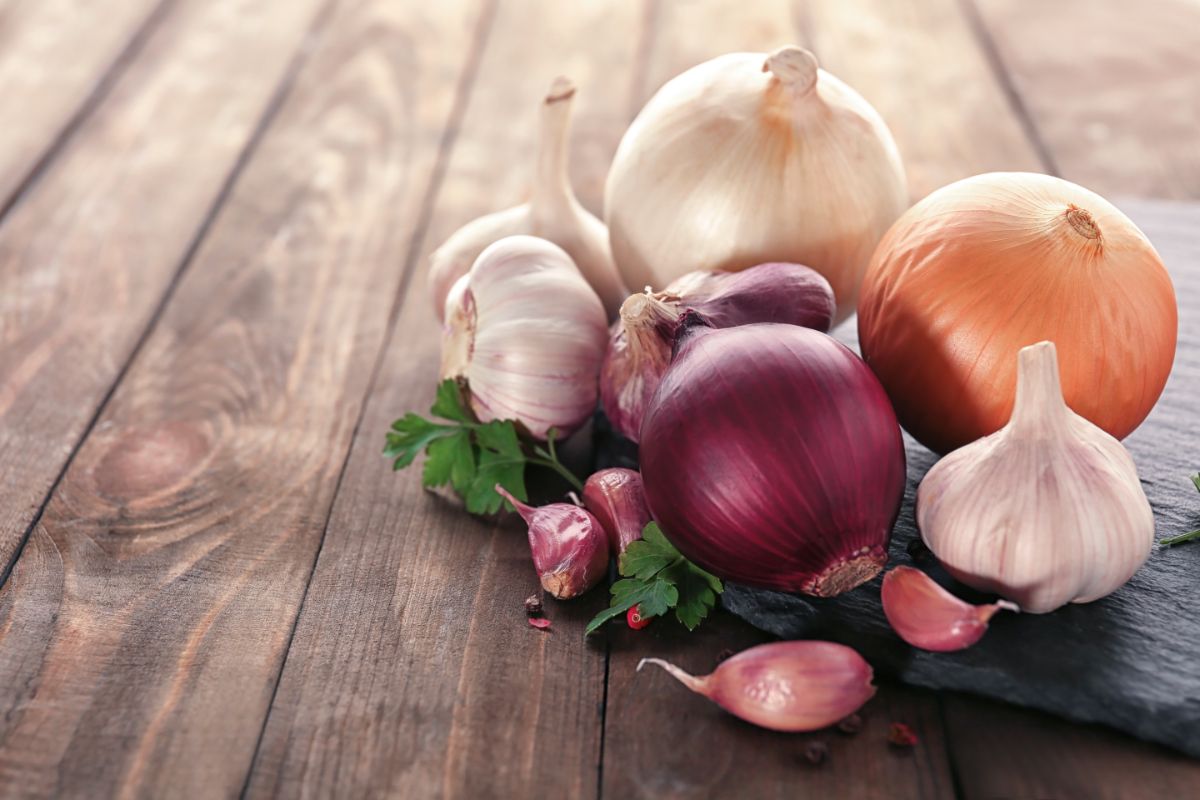
Popping an unpeeled clove of garlic into the container with your strawberries helps them stay fresh longer.
Chinese scientists have confirmed that interplanting garlic and/or Chinese chives with strawberries reduces the activity of insects that carry viruses and bacteria that can mar the complexion of your strawberries. And researchers at the Key Laboratory of Bio-based Material Science and Technology of the Ministry of Education in China have confirmed that tiny amounts of garlic oil sprayed on strawberries after harvest can extend the freshness by as much as five days.
Unless you happen to like the taste of the combination of garlic and strawberries or chives and strawberries, don’t try to coat your strawberries with garlic oil. But try popping a clove of garlic in the clamshell with the strawberries you bring home from the market or the produce stand and you will stay fresher longer.
Even better, treat strawberries and onions, garlic, or chives as companion plants in your own strawberry beds. The odor of the onions or garlic won’t get inside your strawberries, and you won’t be bringing in as many microbial problems with your harvest.
Broccoli Is a Friend to Strawberries
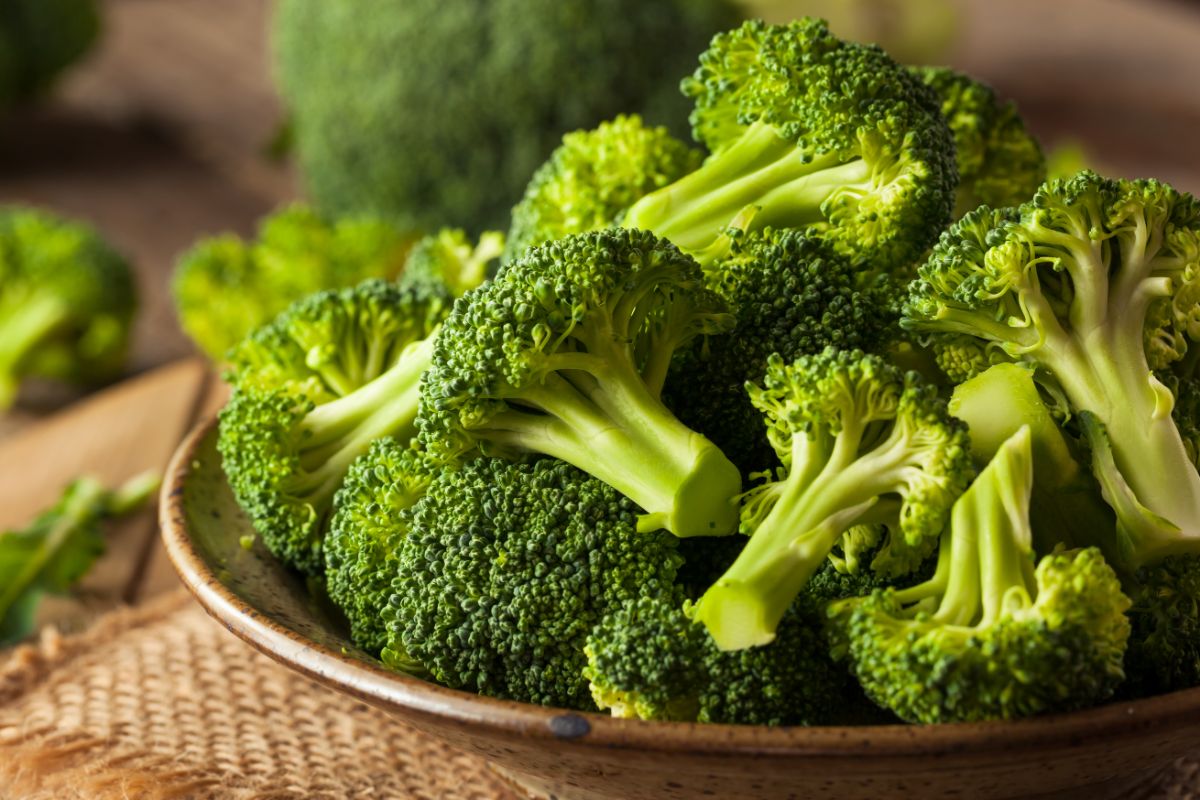
Rotating strawberries and other susceptible plants with broccoli or mustard plants reduces the number of charcoal rot spores in the soil, as does working mustard plant meal (the vegetable, not the condiment) into the soil. And storing broccoli and or mustard next to strawberries in your produce crisper also helps to keep your strawberries fresher.
Broccoli is a great companion crop for strawberries. Home gardeners, farmers, and scientists know that rotating strawberry and broccoli crops stop Verticillium wilt which can kill strawberry plants. And a team of scientists at the University of Bologna in Italy report that “broccoli vapors” in the produce crisper stop gray mold and set off biological reactions in strawberries that increase their content of vitamin C. Close proximity to broccoli during cold storage sets off reactions that increase the antioxidant capacity of strawberries, making them even healthier than before they were put In the fridge.
There’s no need to store broccoli and strawberries in the same container. Having them in the same compartment in the refrigerator is enough. It takes about two days for the “broccoli vapors” to increase vitamin C in strawberries stored near them.
You Can Apply the Principles of Plant Power With Companion Planting
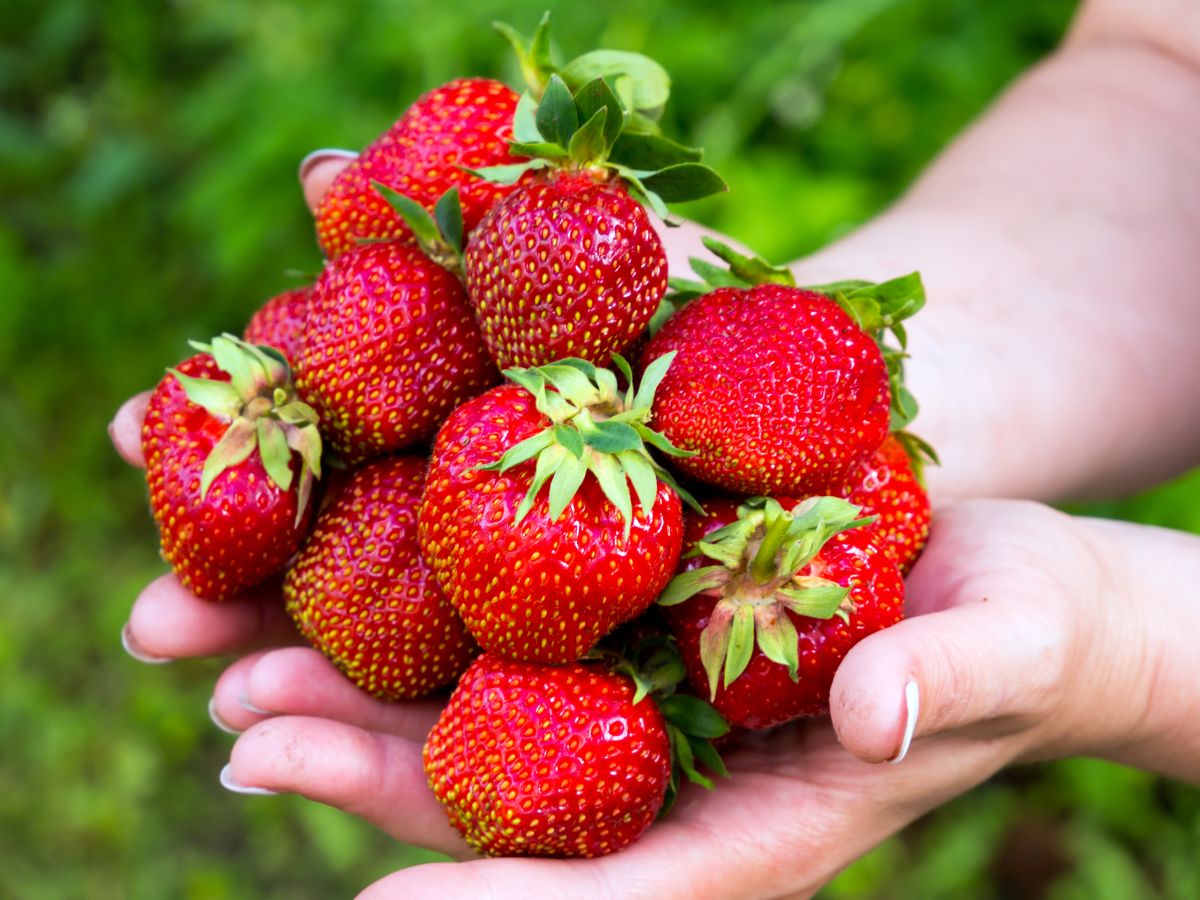
You can keep fungi off your strawberry plants even before their flowers set fruit with companion planting. You aren’t likely to use cinnamon, cloves, or even lemon trees in your home garden, but it’s easy to interplant strawberries with onions or garlic and to rotate plantings of broccoli with your strawberry patch.
Other useful companion plants that protect growing strawberries, but that don’t have applications are harvested for protecting strawberries, including borage, bluebonnets (lupin found in Texas), lupin (the larger flowering plants found in temperate climates)k horseradish, and rhubarb. These planting principles could also apply to commercial plantings, although they would complicate harvest.
All of These Home Remedies Have Commercial Applications
The protective value of certain spices, fruits, herbs, and vegetables has not escaped commercial strawberry growers. In some countries, especially in Japan, tiny amounts of essential oil are combined with chitosan to be sprayed on fresh-picked fruit so it will not decay on the way to the supermarket.
What’s chitosan?
Chitosan is a complex sugar, so complex that it acts like fiber. It’s extracted from the shells of crabs, lobsters, and shrimp. A vegan version of chitosan can be made from mushrooms. Chitosan is safe for people, pets, and wildlife. It has the appearance of creamy foam.
Chitosan can be sprayed in the strawberry patch to protect strawberries from fungi while they are still on the plant. It can be mixed with tiny amounts of the essential oils of the plants mentioned in this article to keep strawberries from going bad once they are picked.
If you are a home gardener, it’s fine to spray chitosan on your plants to prevent damage from fungi before you harvest your strawberries. Scientists tell us that chitosan increases the yields of strawberries from your garden and stimulates them to produce more antioxidants as they ripen. But treatment after picking is more appropriate for commercial growers.
That’s because it’s a little difficult to get the right dilution of essential oil in chitosan to treat strawberries at home once they are picked, but there are machines for spraying chitosan on strawberries electrostatically for commercial growers.
There is just one downside to using chitosan on strawberries. Spraying chitosan on your strawberries while they are still in the patch increases the production of allergens. If you are allergic to strawberries, you will be more allergic to strawberries that have been sprayed with chitosan. (The problem is an allergy to strawberries, not an allergy to chitosan, scientists say.)
None of These Mold-Fighting Remedies Works Well Without Refrigeration After Harvest
Let’s take a minute to review. You can use broccoli, cinnamon, cloves, honey, lemon zest, onions and garlic, lemon verbena, lemongrass, limes, and oranges to help keep strawberries fresh. If you avoid bruising your strawberries and use these simple home remedies for strawberry fruit decay, you can keep strawberries fresh and delicious for as long as you do one other thing:
Put your strawberries in the fridge as soon as possible.
All of these easy-to-find household spices and fruits fight fruit decay, but they don’t work miracles. You always need to refrigerate your strawberries right away after harvest. Strawberries need to be in the refrigerator within the first hour after you have harvested them. Your refrigerator needs to be set at about 37 degrees Fahrenheit (3 degrees Celsius) to stop the growth of molds. Use the power of plants to preserve the color and flavor of your strawberries kept under refrigeration.









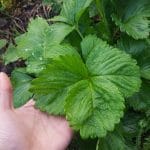
Millicent says
I make wine and have Campden tablets around to control molds during fermentation. I put two ground up Campden tablets in a gallon of water. When I have strawberries, I just pour some of this through the clamshell container of strawberries and set it on a paper towel in the fridge. No mold on my berries!
Mary Ward says
Interesting tip! Thanks!